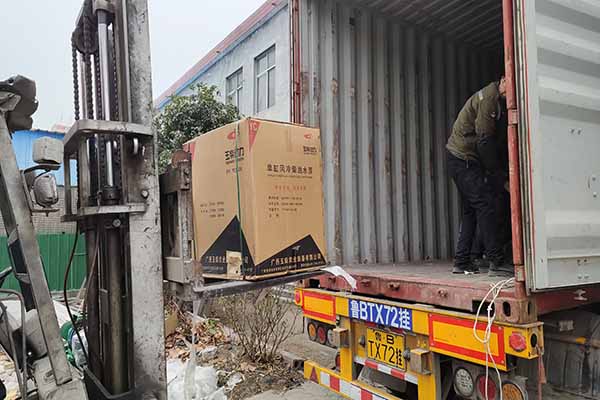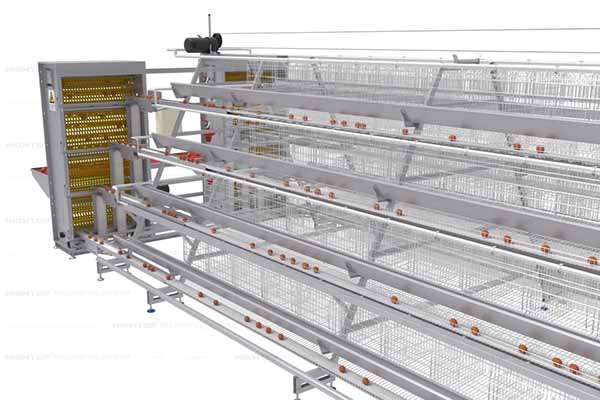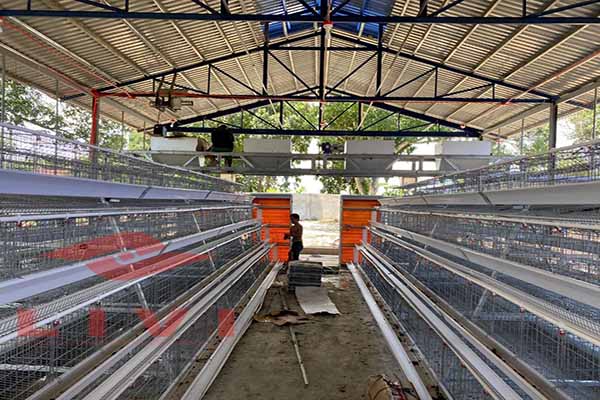Automated Equipment Installation Process for Tanzanian Chicken Farms
Time : 2025-07-02
The poultry industry in Tanzania is experiencing significant growth, and with this growth comes the need for efficient and automated equipment installation processes. This article delves into the intricacies of automating the installation process for chicken farms in Tanzania, ensuring that the operations are streamlined, cost-effective, and scalable.
Introduction to Automated Equipment Installation
Automated equipment installation is a critical component in modern poultry farming. It involves the integration of advanced technology to streamline operations, reduce labor costs, and improve overall efficiency. In Tanzania, where the poultry industry is rapidly evolving, the adoption of automated systems is essential for staying competitive.
Importance of Automated Equipment in Tanzanian Chicken Farms
1. Increased Productivity: Automated systems can process a large number of chickens in a short period, leading to increased productivity.
2. Reduced Labor Costs: With automated systems, the need for manual labor is minimized, which can significantly reduce labor costs.
3. Enhanced Biosecurity: Automated systems can help maintain high levels of biosecurity, reducing the risk of disease outbreaks.
4. Improved Monitoring and Control: Real-time data collection and analysis enable better monitoring and control of farm operations.
Steps in the Automated Equipment Installation Process
1. Needs Assessment
The first step in the installation process is to conduct a thorough needs assessment. This involves evaluating the current state of the farm, identifying areas that require automation, and determining the scale of the installation.
A needs assessment should consider factors such as the size of the farm, the number of chickens, the existing infrastructure, and the specific goals of the farm owner.
2. Equipment Selection
Once the needs are identified, the next step is to select the appropriate automated equipment. This may include feeders, waterers, incubators, automation systems, and more.
When selecting equipment, it is crucial to consider factors such as durability, reliability, and compatibility with the existing infrastructure.
3. Planning and Design
The planning and design phase involves creating a detailed blueprint of the installation process. This includes determining the layout of the equipment, ensuring proper ventilation, and considering electrical and mechanical requirements.
The design should be scalable and adaptable to future expansion, ensuring that the farm can grow without the need for a complete overhaul of the automation system.

4. Installation
The actual installation process requires skilled technicians who are familiar with the equipment and the specific requirements of the farm. It is important to follow the manufacturer’s guidelines closely to ensure proper installation.
During installation, it is essential to maintain a clean and organized workspace to prevent damage to the equipment and to ensure a smooth installation process.
5. Testing and Commissioning
After the installation is complete, the equipment must be thoroughly tested to ensure that it is functioning correctly. This includes checking for any leaks, electrical issues, or mechanical problems.
Testing should be done under simulated farm conditions to ensure that the equipment will perform as expected in the real-world environment.
be done under simulated farm conditions to ensure that the equipment will perform as expected in the real-world environment.
6. Training and Support
Proper training of farm staff is crucial for the successful operation of automated equipment. Additionally, ongoing support from the equipment manufacturer or a speciali zed service provider is essential to address any issues that may arise.
zed service provider is essential to address any issues that may arise.
Training programs should be tailored to the specific needs of the farm and should cover all aspects of the automated equipment, from basic operation to troubleshooting.
Challenges and Solutions
1. Lack of Skilled Labor
One of the challenges in Tanzania is the lack of skilled labor to handle the installation and maintenance of automated equipment.
To address this, partnerships with local technical schools and vocational training centers can be established to train the next generation of poultry farm technicians.
2. High Initial Costs
The initial cost of automated equipment can be a barrier for many small-scale poultry farmers.
To mitigate this, government incentives, such as subsidies or low-interest loans, can be provided to encourage farmers to invest in automation.
Conclusion
The automated equipment installation process for Tanzanian chicken farms is a multifaceted endeavor that requires careful planning, skilled labor, and ongoing support. By embracing automation, poultry farmers in Tanzania can enhance their operations, increase productivity, and ensure a sustainable future for the industry.
Tags











